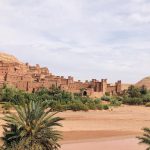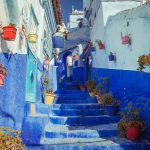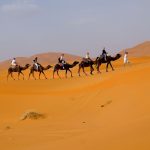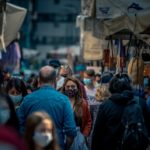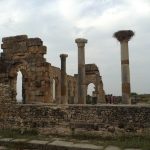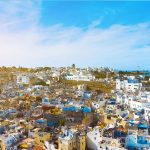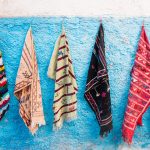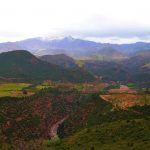Visiting a beautiful and fascinating country like Morocco promises us a great deal of fun. Thus if you plan to visit Morocco, it should be worthwhile to have a sneak peek at the history and culture of this African country before your visit.
Whether you’re exploring the ruins of Volubilis, strolling through the streets of an ancient medina, shopping for spices in a centuries-old souk, or following a chain of pack mules up to a remote Berber village, you can’t escape the power of Moroccan history. In the valleys of the High Atlas, the descendants of the country’s original nomadic inhabitants still live in a remarkably similar style to their ancient ancestors. Architecture in urban areas often carries traces of the Roman and Islamic occupations that helped shape modern Morocco.
Morocco is an ancient country with a strong sense of culture. Though the ancient culture of Morocco has influenced its people for centuries, it is diverse and seems to have been derived from several other ancient cultures. If you would like to know more about the history, developments, and influences of this country’s unusual culture, you will no doubt enjoy reading our basic description of Moroccan history below.
The original inhabitants of Morocco were the Berber people; Amazigh (plural Imazighen, loosely translated as ‘free-born’), who may have been distant cousins of the ancient Egyptians. They were joined by Mediterranean anglers and Saharan horse-breeders around 2500 BCE, with Phoenicians showing up fashionably late around 800 BCE and East Africans around 500 BCE.
When the Romans arrived in the 4th century, they didn’t know quite what to make of this multicultural milieu. Rome’s influence in the Maghreb was geographically limited, but for 300 years it was of strategic importance and a source of vast wealth for the empire. The breathtaking archaeological remains, especially at Volubilis, point to Rome’s commitment to the region. By the 3rd century BC, Carthage (modern-day Tunis) had caught the attention of Rome, who eyed it with a desire that epitomized the empire’s insatiable appetite for expansion. A trio of Punic Wars, spanning 100 years, caused Rome to fear for its future. However, Carthaginian potency waned with the death of Hannibal, and in 146 BC, after a three-year siege, Carthage was finally crushed. Rome annexed North Africa and now controlled the Mediterranean. The region was divided among various client kings, headed by the Numidian prince Jugurtha. When he attempted to unify the kingdoms in revolt, Rome had no choice but to act. In 106 BC, after a six-year war, Jugurtha was dead and Rome’s grip on North Africa left unchallenged—at least for another 60 years, that is.
Islam Arrives in Morocco,
Islam was first brought to Morocco in 680 by an Arab invasion under the Uqba ibn Nafi, who was a general serving under the Umayyads of Damascus. In 788, The Zaydi Shia Idrisids ruled large parts of Morocco. Their contemporaries included the heretical Barghawata state and the Khariji state of Sijilmasa. After several Berbers formed more powerful Islamic dynasties that reigned over the country. Among them were the Almoravids (1040–1147), who was the first to unite Morocco, as well as significant regions in West Africa, Spain, and Algeria. The Almoravids were responsible for making the Maliki school of Islamic jurisprudence the most prominent in Morocco. It was later under Almohad rule (1121-1269) that smaller Muslim sects were persecuted and orthodox Sunni Islam became prevalent across the country.
In 2016, the government developed a strategy to further adherence to the Maliki Islamic school of thought. Religious education had textbook passages deemed promoting violence removed from the curriculum. As a result, religious textbooks had 24 lessons compared to the former 50
Today Islam is the constitutionally established state religion and the king claims his legitimacy as head of state and religion – in part his legitimacy is supported by the claim that he is descendent of the prophet Mohammed. Around 2/3rds of the population are Sunni and 30% are non-denominational Muslims; Shia is a very small minority of the population. The constitution gives rights and protections to Islam as opposed to other religions, including making it illegal to try to convert a Muslim to another faith.
The Kingdom of Morocco is a parliamentary constitutional monarchy with an elected government. The current king, King Mohammed VI holds a position of a secular political leader and “Commander of the Faithful” (part of his official title) – hence he holds some executive powers of governance and legislative powers and is the religious head of state with all religious leaders being subordinate to him.
European Influence
In the 15th century the conflict between the Spanish and Portuguese found the Portuguese in control of the Port of Ceuta. The Moroccans rose against them in 1578 and gained control of the port and also pushed them out of other coastal towns by 1700. The Alaouite dynasty was able to maintain Morocco’s independence in the 18th and 19th centuries. However, the first few years of the 20th century saw a rush of European powers and the French, in particular, furthering their interests in North Africa. In 1904 when France got recognition for its sphere of influence in Morocco there were strong reactions from the Germans. A resolution was reached in 1905 -01906 and France was entrusted policing of a major portion of Morocco along with Spain who was to be the protecting power over northern and southern Spain.
Under the treaty of Fez signed on 30 March 1912, Morocco became a protectorate of France, and from 27 November 1912 Spain became the protecting power for the northern and southern parts of Morocco. The protectorate left Morocco as a sovereign state under the reign of the sultan with the European powers assuming control of Morocco, which they did until Moroccan independence on 7 April 1956 when a constitutional monarchy was formed under Mohammed V.
Independence of Morocco
In August 1953, the tension broke out between Moroccan citizens and colonial powers decided to exile Sultan Mohammed V and the rest of the royal family, including late King Hassan II, who was back then Crown Prince of Morocco. The decision of the French colonizers led to a revolution from the Moroccan resistance and liberation army, who played a crucial role and fought for Morocco’s territorial integrity and the return of the beloved sultan and the royal family.
After three years in exile, the royal family came back home in 1955 when Sultan Mohammed V successfully negotiated with France and Spain for the independence of Morocco. The late King then announced the end of colonial rule, saying in his speech delivered from Rabat on November 18, 1955: “We are delighted to announce the end of the trusteeship system and protectorate and the advent of freedom and independence. “The celebration comes two weeks after the yearly commemoration of the historical Green March on November 6. On October 16, 1975, King Hassan II delivered a speech inviting Moroccan citizens to participate in the famous Green March.
“We have to do one thing dear people and that is to undertake a peaceful march from the north, the east, the west to the south. It behooves us to act as one man in order to join the Sahara,” King Hassan II said.
On July 23, 1999, King Hassan died concluding his monarchy in the modern history of a total of 38 years. His son Crown Prince Mohammed ascended the throne in July 1999 after his death. And from then Morocco’s stability continues to be a valued prize for most of its citizens
Morocco is a country that has been through a lot and a number of different countries, occupations, tribes, cultures, and religions have influenced and changed the country’s history.

